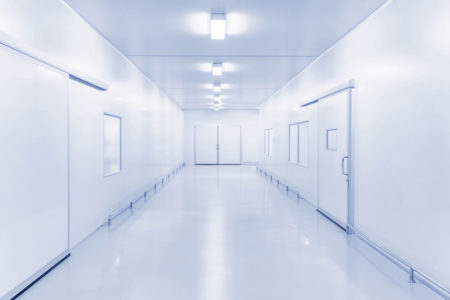
Share On Social!
Many people spend up to 90% of their time indoors, whether at the office, in a restaurant, or at home.
The way architects, designers, and construction workers erect these buildings can impact human health — including the way light is disbursed. Medical professionals and those in charge of building these structures need to collaborate to create a culture of holistic health.
Natural and artificial lighting make significant impacts on people’s sleep cycle, skin, and eyes, according to the European Union’s Scientific Committee.
“There is a concern that the emission levels of some lamps could be harmful for the skin and the eyes,” the group states. “Both natural and artificial light can also disrupt the human body clock and the hormonal system, and this can cause health problems.”
Artificial Lighting and Its Risks
There is one significant issue concerning these forms of light: The body’s internal processes.
Both natural and artificial lights emit radiation, including ultraviolet (UV) and infrared (IR). These waves can impact various bodily functions, including the sleep cycle and lacking needed nutrients.
A 2015 research review from the Institute for Occupational & Environmental Health at Korea University in Seoul illustrated the need for more natural lighting than artificial.
 “Artificial light exposure at night causes a suppression of melatonin, deterioration in sleep quality and disturbance in biorhythms,” researchers write. “Most environmental pollutants cause negative health effects when humans are exposed to an ‘amount’ in excess of a threshold. In the case of light, the ‘amount’ may mean not only the intensity, but also the duration and cycle of exposure.”
“Artificial light exposure at night causes a suppression of melatonin, deterioration in sleep quality and disturbance in biorhythms,” researchers write. “Most environmental pollutants cause negative health effects when humans are exposed to an ‘amount’ in excess of a threshold. In the case of light, the ‘amount’ may mean not only the intensity, but also the duration and cycle of exposure.”
The study also demonstrates how the duration and intensity of exposure can impact all areas of wellness.
Humans experiencing high levels of artificial lighting exposure can throw off the body’s biological clock. Furthermore, other functions, including melatonin suppression, phase shift, sleep latency, and body temperature, also were impacted.
Worse, researchers have linked pervasive artificial lighting to a rise in cancer incidence rates, according to Abraham Haim and Boris A. Portnov, researchers and authors of, “Light Pollution as a New Risk Factor for Human Breast and Prostate Cancers.”
“The invention of electrical light bulbs created more opportunities for work and leisure. However, exposure to artificial light at night affects our biological clock, and suppresses pineal melatonin (MLT) production,” Haim and Portnov write. “Among its other properties, MLT is an antioncogenic agent, and therefore its suppression increases the risks of developing breast and prostate cancers.”
Solutions for Better Lighting
The American Institute of Architects (AIA) recommends that building design needs to improve lighting.
“Historically, buildings were lit only by the sun and could not be any deeper than how far daylight could penetrate the space,” the group writes. “Those without access to daylight and views have been shown to be less productive and less creative, and to take more sick days—at a significant expense to their communities and the companies for which they work.”
In their guide, “Design for Wellness,” AIA gives 10 proposals to design buildings in a way that provide occupants with better access to natural lighting that can promote health and happiness, including: 
- “Daylight needs opaque light smooth surfaces on which to land, reflect, and illuminate.”
- “Daylighting works as an energy-saving strategy only if the lights are off. To ensure this, all buildings should include photo-sensors that control continuous dimmers.”
- “Democratize daylight by moving shared spaces to the perimeter, where the daylight can benefit the most people.”
Those who want to improve their access to natural lighting in the home can take steps such as, using mirrors throughout the layout and adding a skylight to any room, according to Bright Nest.
You can even change the door.
“If you have a solid, exterior door in your dark room, replace it with a door that has a window,” according to Bright Nest. “If you’re worried about burglary, you can find glass doors at your local hardware store that have high-security glass.
Read more about exposures from synthetic chemicals and other artificial products!
Editor’s Note: This is Part One of a series on building for holistic health. This article is part of a collaboration between Salud America! and the Hoffman Toxicant-Induced Loss of Tolerance (TILT) program at UT Health- San Antonio. To find out if you are TILTed due to exposure to everyday foods, chemicals, or drugs, take a self-assessment or learn more about TILT.
By The Numbers
142
Percent
Expected rise in Latino cancer cases in coming years



